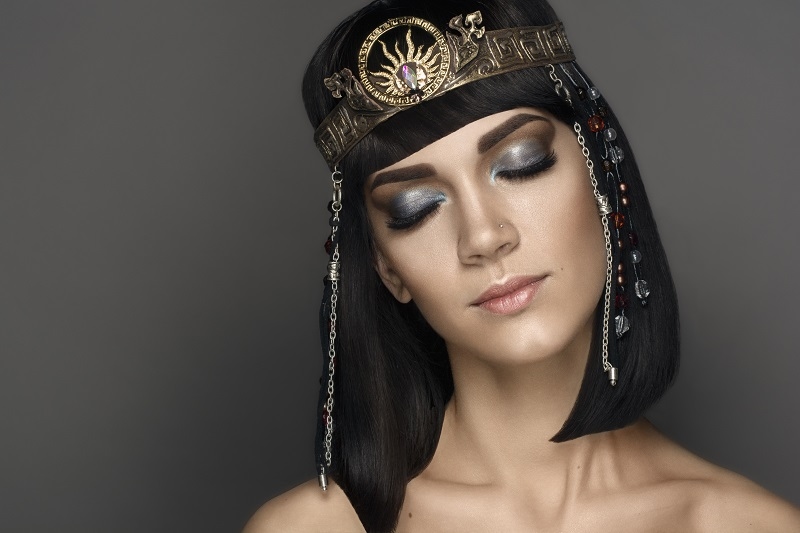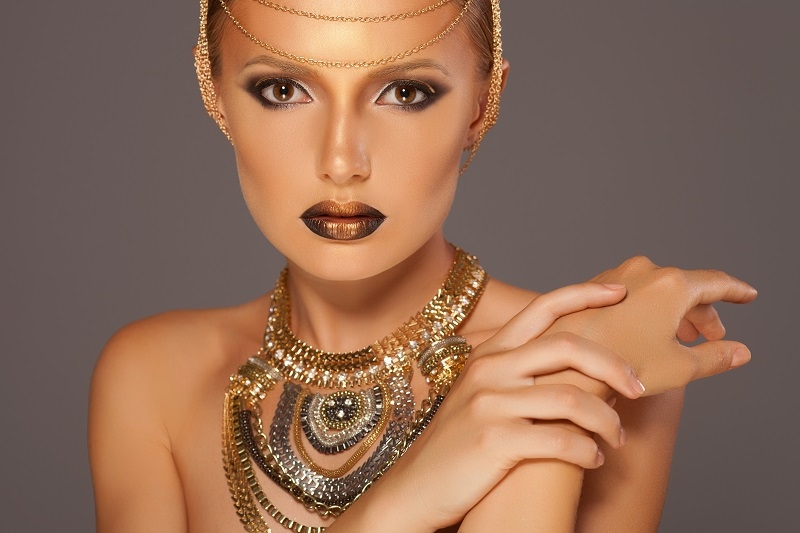
Ancient Egyptian art depicts a pride to the world because no other society will be able to compare with any other in regard to artistic and creative capabilities. One expression of such talent is through the hair accessories designed by these master craftsmen and women. Apart from beauty, these adornments have been statements of the owner's social status, religious beliefs, and other cultural symbolisms. This paper examines thrilling materials used in making Egyptian hair accessories, such as gold jewelry, beads and stones, natural materials, and the glorious traditions of historical handicrafts that made these objects unique.
Hair, to the Egyptians, was more than just a bodily feature; indeed, hair represented a kind of self-expression and status. It is said that both men and women in ancient Egyptian culture took much care with their hair, sometimes using wigs and elaborate adornments. Hairstyling accessories thus form an essential element in enriching these designs where functionality mixes well with aesthetic values. From the gold and ornaments to the material of fiber, one of the primary concerns had been the representational as well as the usability of these materials.
Gold was one of the most costly materials for the ancient Egyptians; it represented gods and eternity. The significance of adorning oneself with gold is elite hair dressing that expresses their wealth, power, and relationship with the gods. Artists painstakingly create golden hairpins, diadems, and headbands complete with engravings and inscriptions.
The ductility of gold also helped craftsmen create delicate designs, from lotus flowers to sun disks and scarabs, all imbued with ideas of rebirth, protection, and divine powers. These were not only aesthetically beautiful but also spiritual in nature. How fitting it was that due to gold's resistance to corrosion, beauty would live forever with life in the ancient Egyptian concept.
The third main section of the part is beads and stones, that bring in colour and variety in Egyptian hair adornments with sharp contrast of uniform gold. Beads are strung generally into intricate patterns for making up beaded head pieces. Whereas, stones alone are put in the pins and combs to wear hair adornment.
The most commonly used stones were lapis lazuli, turquoise, carnelian, and amethyst, all with specific symbolic meanings each. Lapis lazuli stands for royalty, heavens; and turquoise represents both protection along with health. Vitality was assigned to carnelian, whereas clarity and peace to amethyst.
This beading artistry was very well articulated in the sense that it required much patience and skills. In general, beads were machined out first and then hand polished by the individuals before being colored either through dye or natural form. The bead jewelry products of diverse colors as well as texture make them fit for daily ceremonies.
Though quite costly and limited, gold and stones only served the exclusive classes; wooden ivory and plant fiber-based materials are accessible for every kind of mass- hence, simple utility took up the premium price due to ingenuity among old Egyptian craftsmanship.
Wood was a favorite, too. It's light in weight but incredibly strong. The trees the wood comes from include acacia and sycamore. Sometimes, woodworkers will paint or carve wood to add ornamentation even to the most mundane items.
Another favorite raw material for hair ornaments were elephant and hippopotamus ivory. Its surface can be smooth enough and light-colored enough to be shaped into the very thin combs and pins. Besides, plant fibers, like flax, were also used as bands or as braids that adorn the hair for practicality as well as ornamentation purposes. These materials also show the genius of old Egyptians in making their surroundings usable.

Ancient Egyptian hair accessories are a reflection of the sophisticated and artistic skills applied by people in society. Chisels, drills, and polishing stones were used to shape and polish the objects produced by the craft people. The extreme level of skill is reflected in the meticulous precision with which the gold and jewels have been used and in their ingenuity in transforming raw natural resources into decorative accessories.
One of the very interesting things that can be taken from historical crafts is balance in functionality and aesthetic appeal. Hairstyling accessories had to serve certain purposes such as holding hairstyles, but to assist the wearer concerning personal appearance as well. Thus, these tools were both utility and art-based.
Hair styles in ancient Egypt completely changed with time. This is through the changes in cultural traditions, contact with the outside, and the evolution of the material and techniques used at the time. On the other hand, hairstyles and ornaments were quite simple in the early stages of Egyptian society and consisted of natural products. As the society began to be richer, gold and other precious stones commonly appeared, "mirroring the growing sophistication and elaborateness of hairstyles.".
The hair fashion was the most elaborate in the New Kingdom period, which lasted from 1550 to 1070 BCE. Wigs were more ornate and formed of gold, beads, and intricate designs. Headbands and headdresses became acceptable during this period as people wore them during ceremonial events and royal rituals. These headpieces represented the best of Egyptian art, combining cultural elements with aesthetic appeal that had no precedent.
These are symbolic hair accessories in ancient Egypt. They really said much regarding the identity, in terms of what they were for socially, religiously, or personally. An example is when a gold diadem has on it a uraeus: it said so much about the royalty and about divine protection; beads made into particular colors indicated that person's role in some ritual.
Material was very important in the symbolism. The gold, associated with Ra, the god of the sun, was said to offer a means of eternal life and divine power. Colourful stones such as turquoise and carnelian were supposed to have protection abilities that would help ward off bad deeds done towards the wearer. Even the organic stuff was believed to have a message behind them because, for instance, wooden combs may depict how practical and in tune with earth they are.
The Egyptians' legacy of hair accessories lives in light, testifying to their artistic and cultural excellence. Such archaeological sites and museums across the world have on display the antiquities that give people an idea of how rich these could be and what importance they carried in everyday life.
These ancient Egyptian creations have inspired jewelry design. Intricate patterns, bold use of color, and symbolic motifs in ancient Egyptian accessories speak to the present audience and thus prove their enduring influence.
It follows that these accessories of the old Egyptians are, in themselves ornaments, but as masterful craftsmanship in the union of art and function with some symbolism. Whether it is by the opulency of the gold, colorful beads and stones used, or simple practicality as seen in most natural materials utilized, these ancient Egyptian creations certainly reflect the ingeniousness and culture richness of its society.
The great care in the selection of the materials and craft that goes into these accessories support their beauty and durability and make them timeless. They are sources of fascination and inspiration and also sources of insight into the values and creativity of one of the most remarkable civilizations in history.
We get to enjoy these things for beauty and, with that, discover the great cultural and historic backgrounds behind the things, giving their heritage an opportunity to stay alive for other generations through those accessories.
This content was created by AI